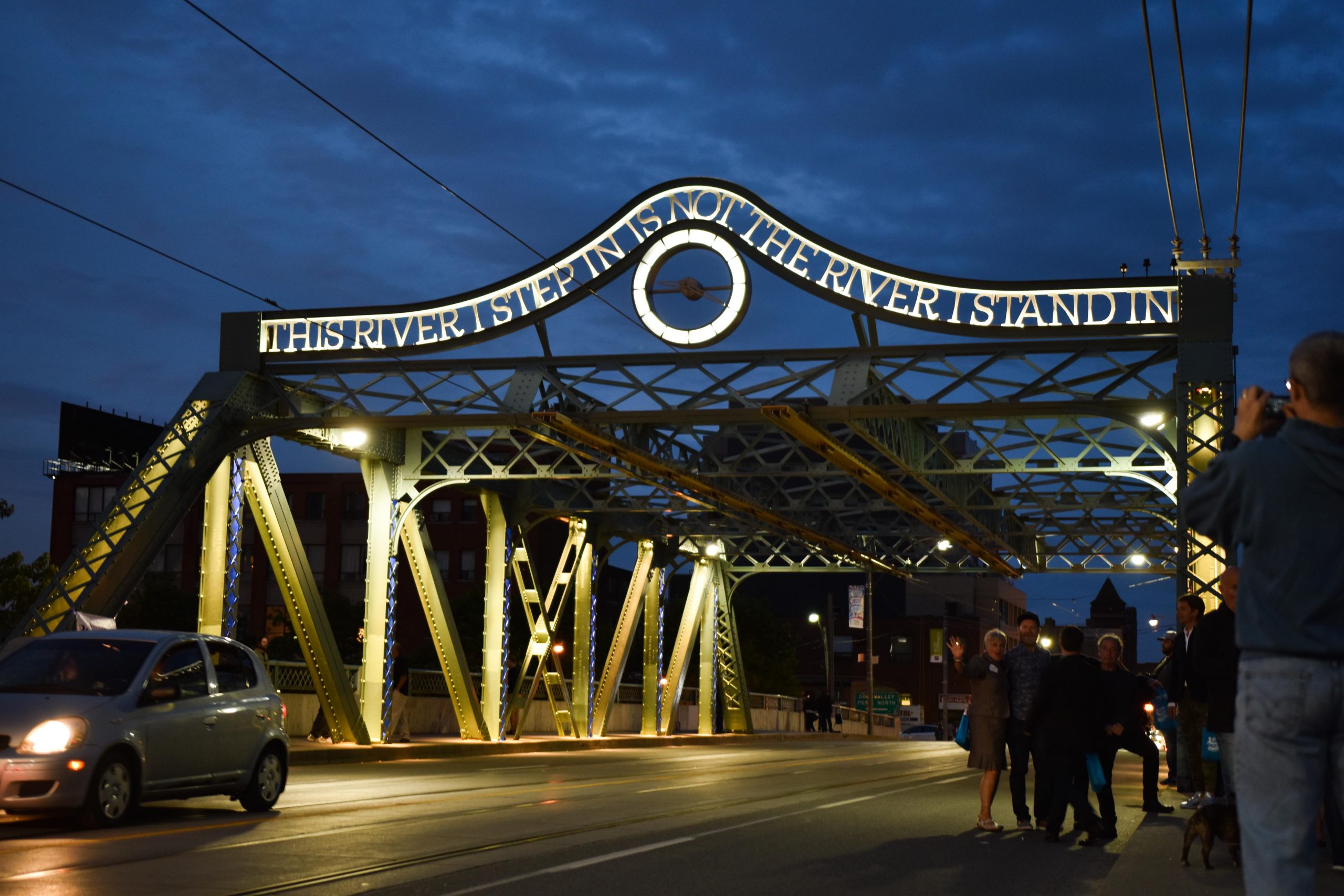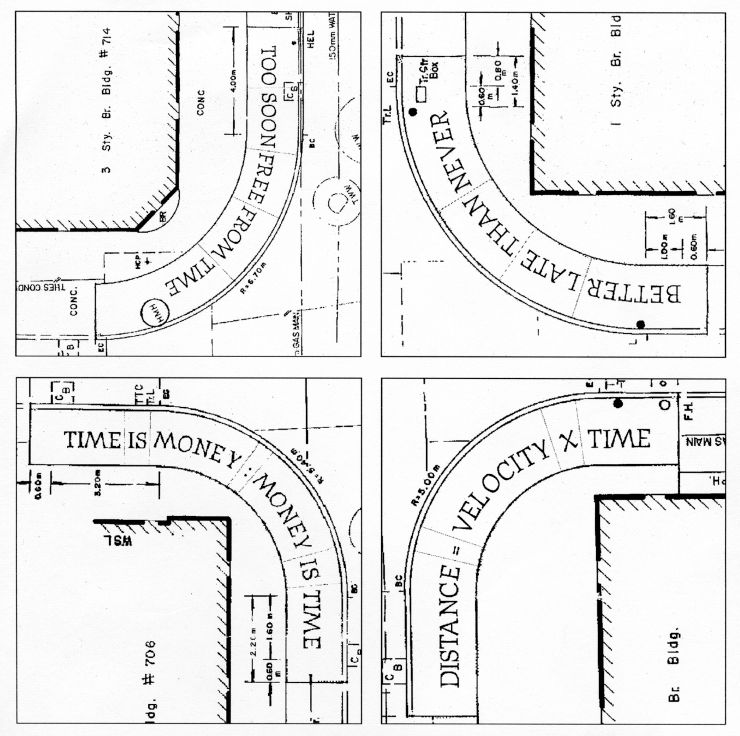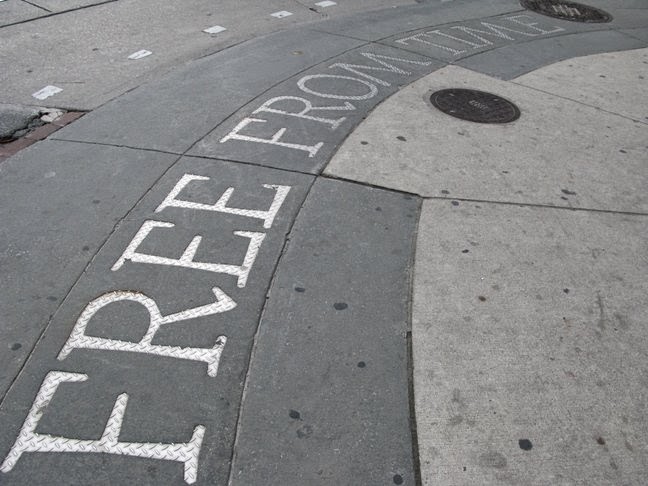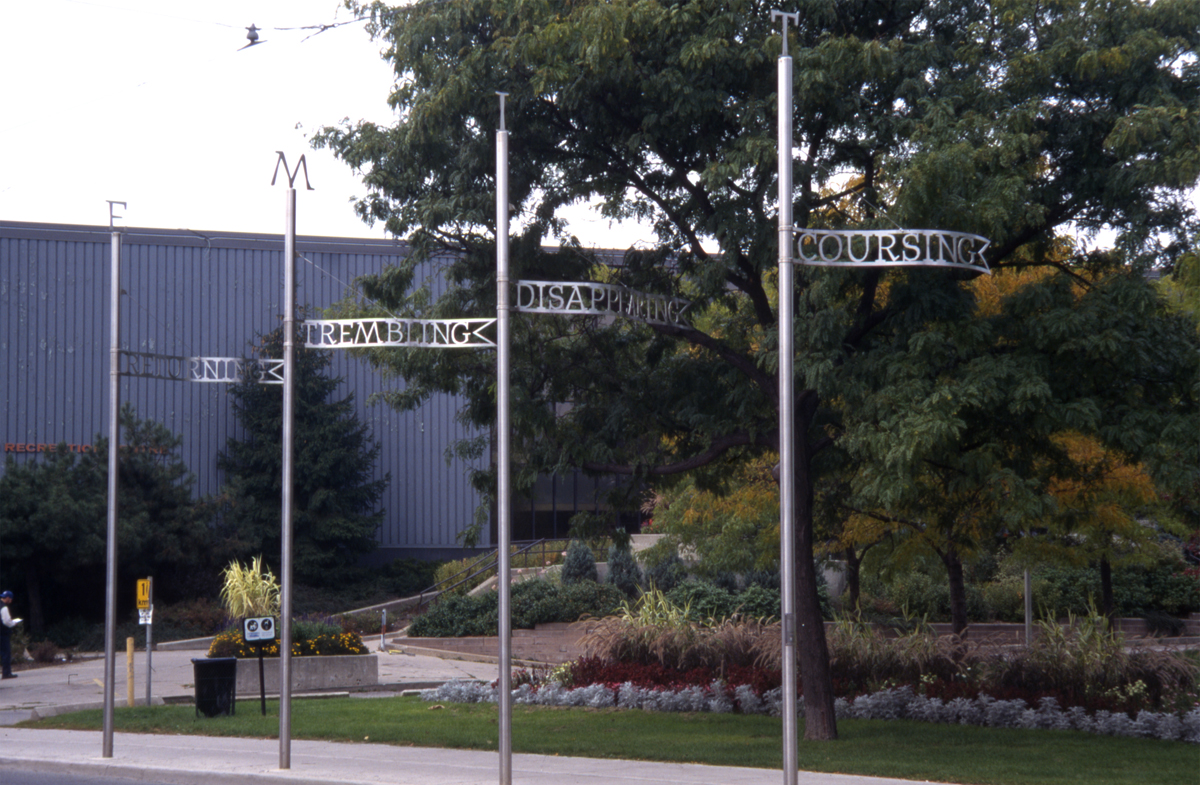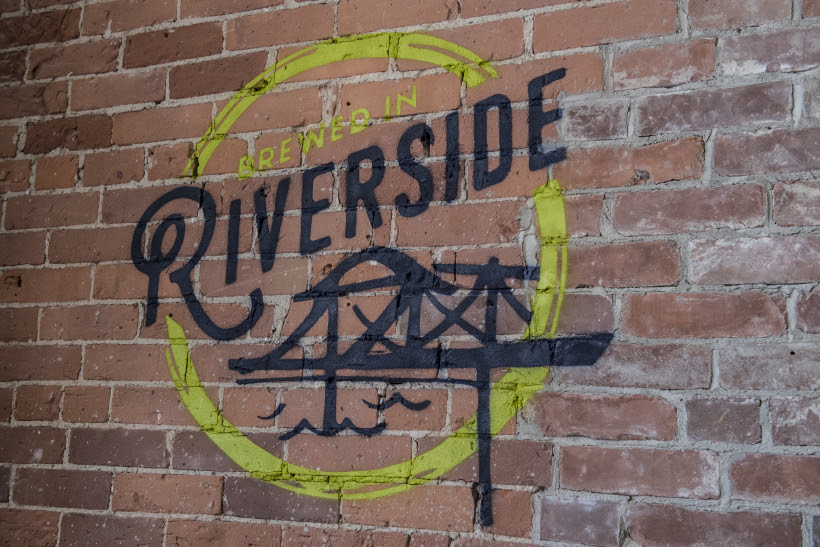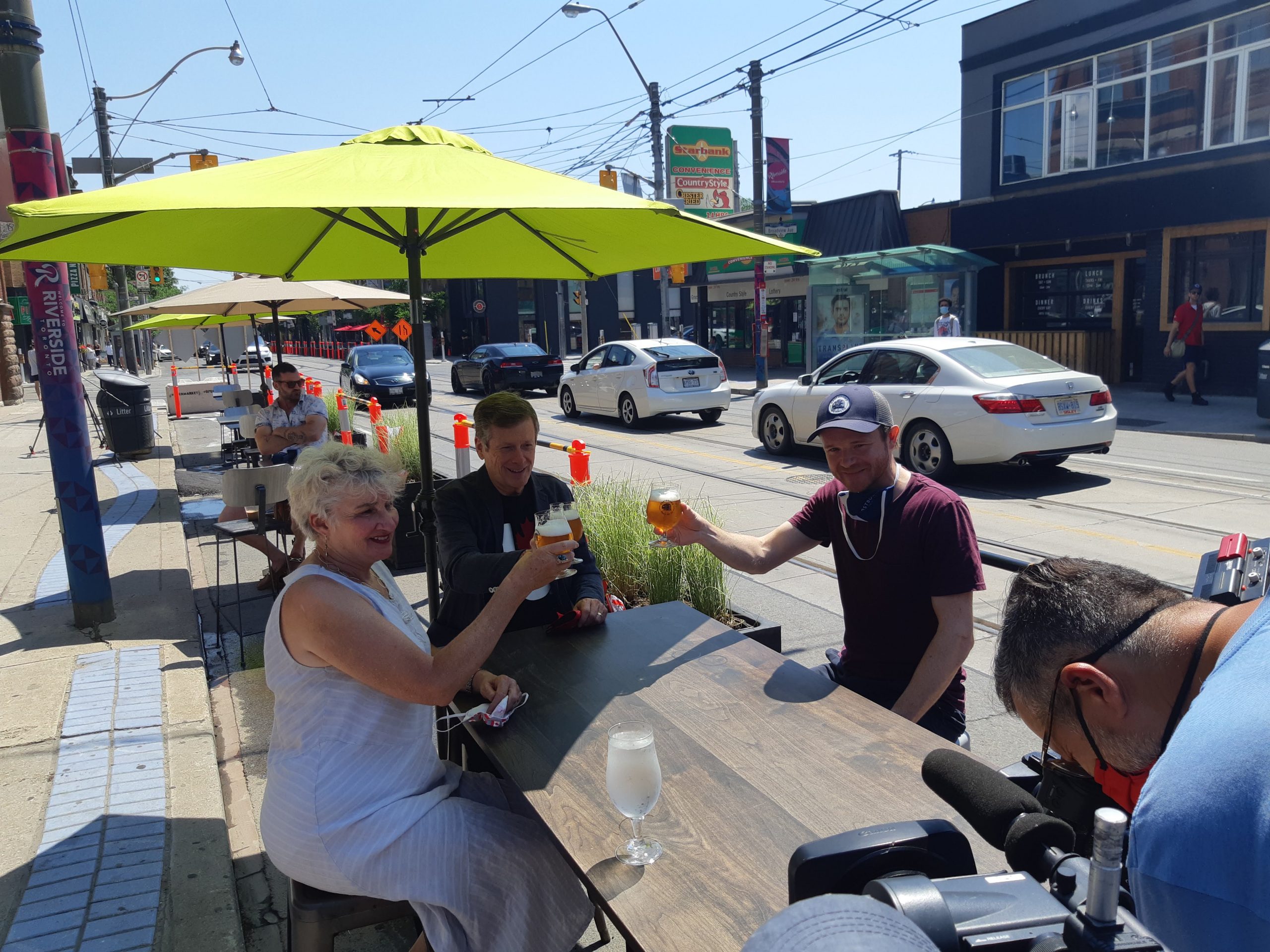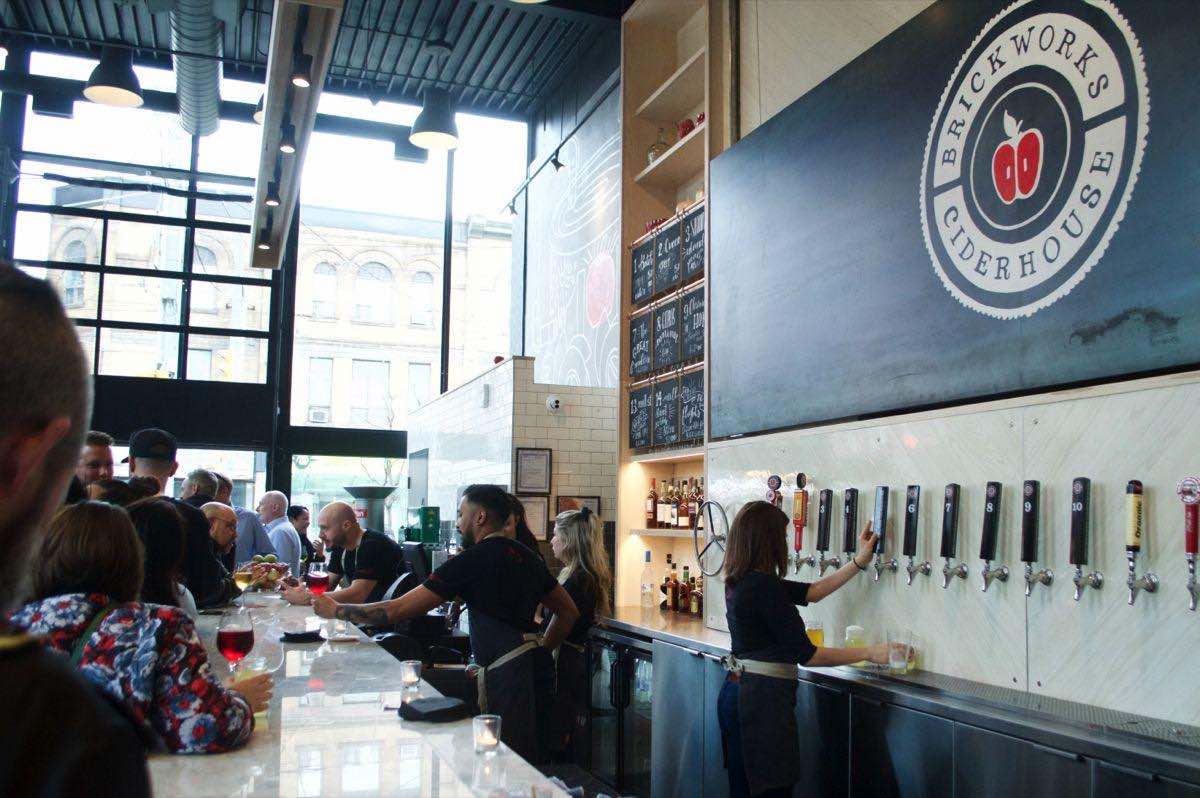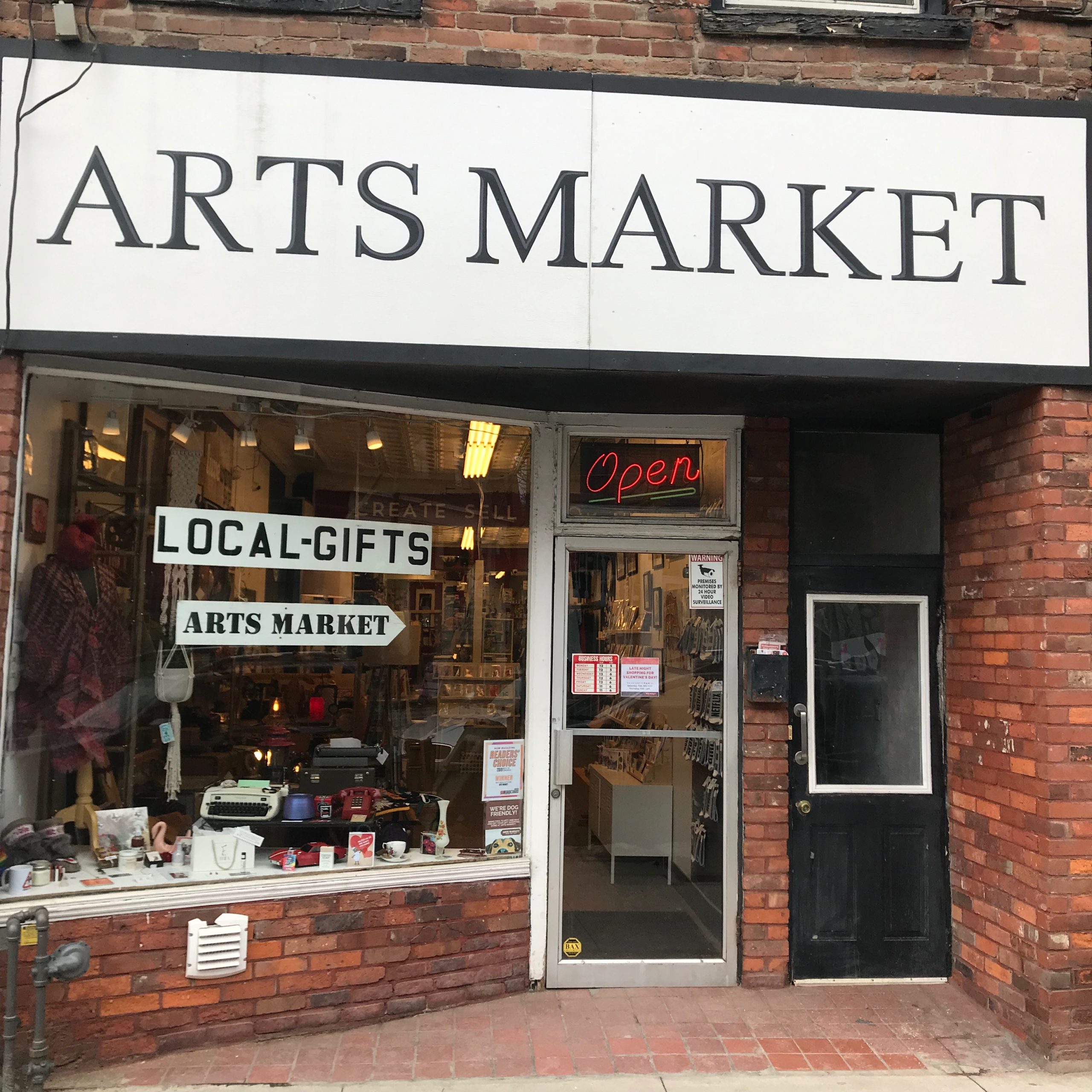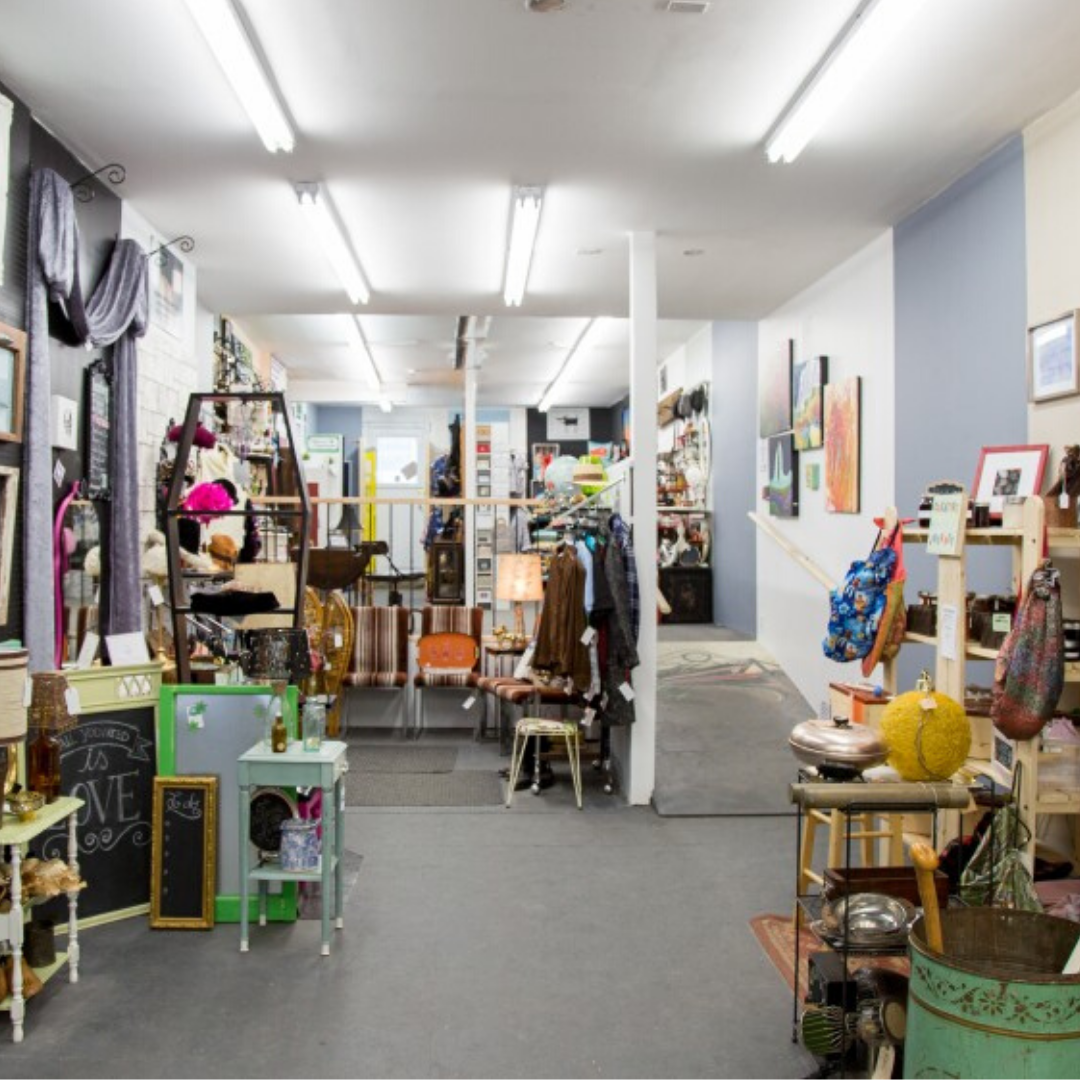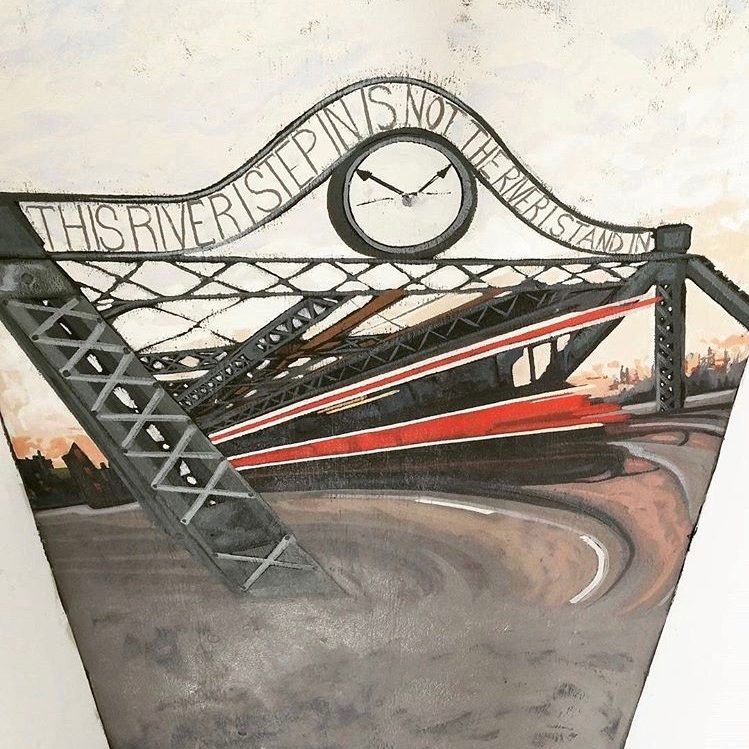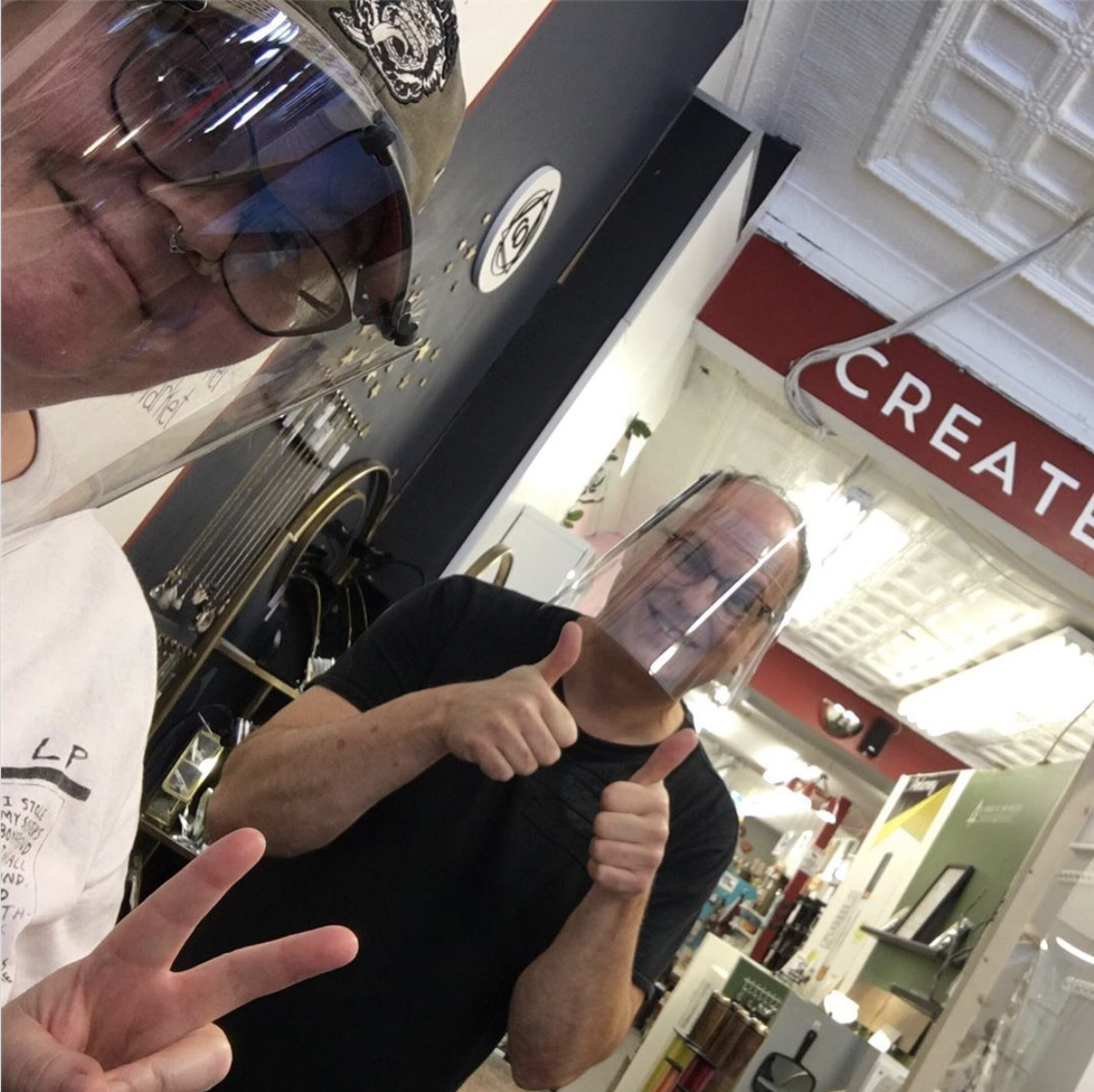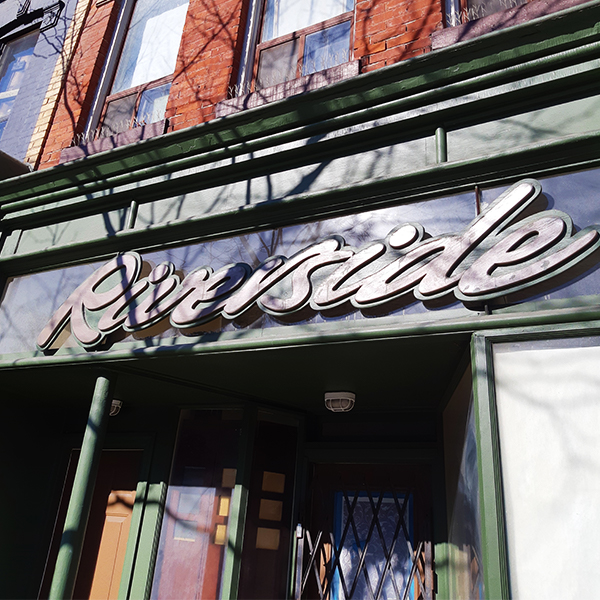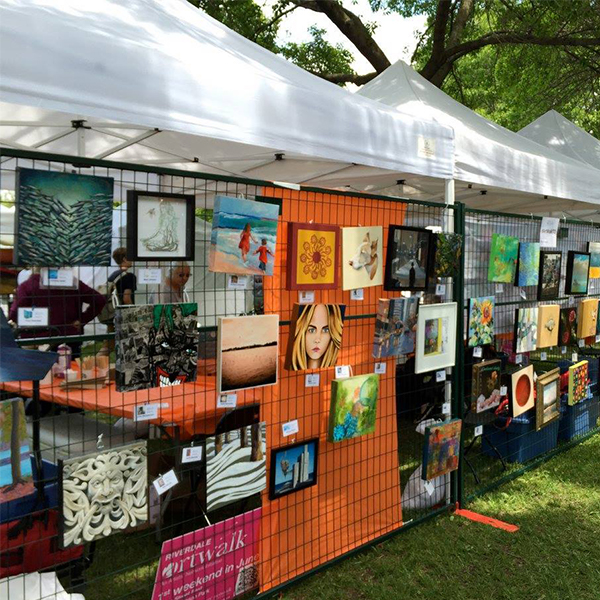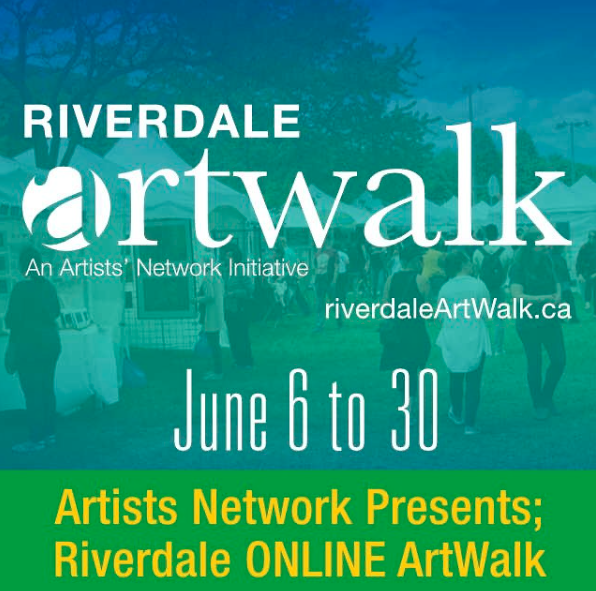June marks National Indigenous History Month to honour the history, heritage and diversity of Indigenouspeoples in Canada. For the fifth feature in the Riverside BIA ‘40 years, 40 stories’ series, we are commemorating the ‘Tkaranto Past/ Tkaranto Future’ mural painted in 2017 by artists Odinamaad , in partnership with Chief Lady Bird and Dave Monday Oguorie. They developed the mural concept by collaborating with Traditional Wisdom Keeper, Philip Cote and youth participants from Toronto Council Fire Native Cultural Centre. The mural moves beyond animating the walls of Woodgreen Services’ 650 Queen Street East location, by rooting the area’s history.
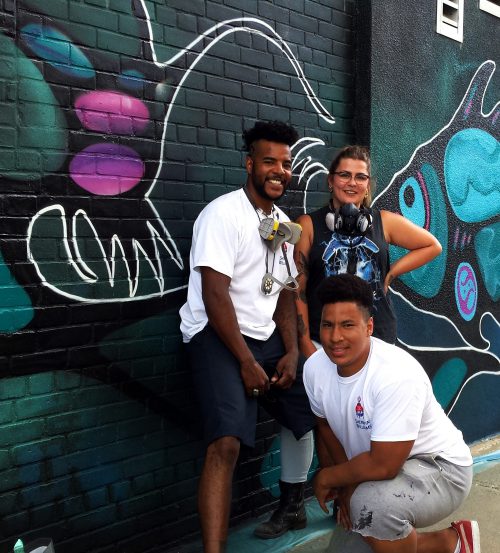
Mural Artists (left to right): Odinamaad, Chief Lady Bird and Dave Monday Oguorie
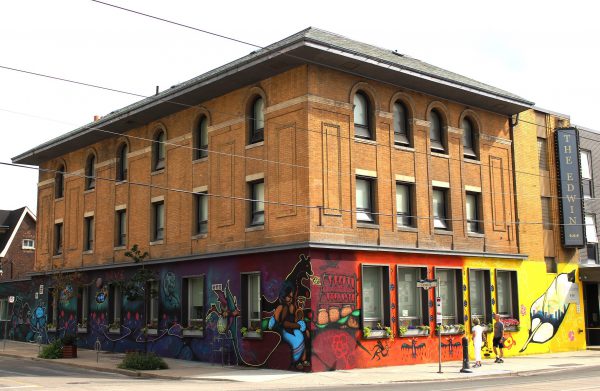
The mural embodies that Tkaranto (Toronto) has always been considered a meeting place: first, for Indigenous nations for travel, trade, hunting and fishing, and in present day, for people who come here from around the globe to gather on the traditional territories of those who first occupied the land. Odinamaad and Chief Lady Bird shared the meaning behind the mural images:
The West-Facing Wall
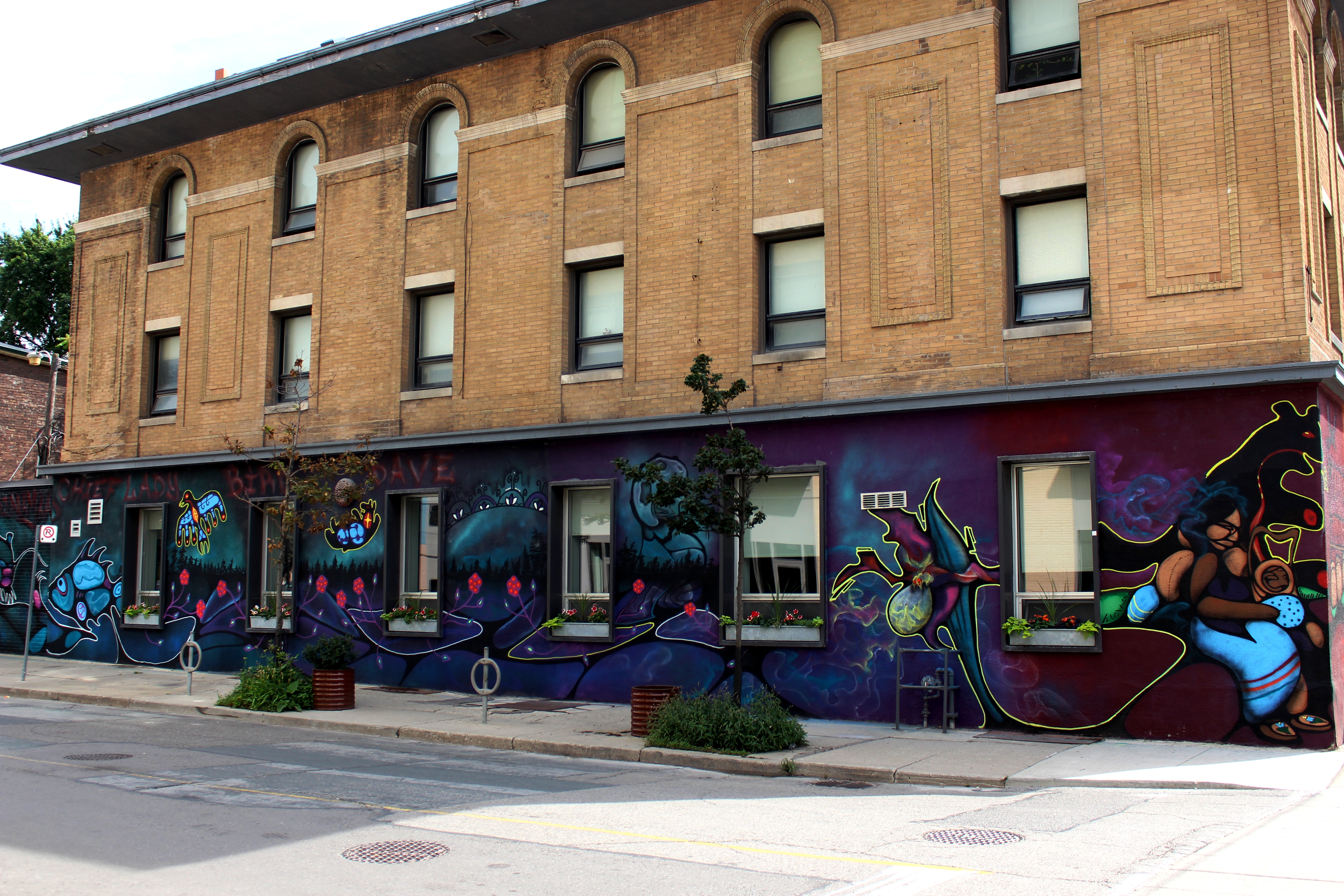
Floral
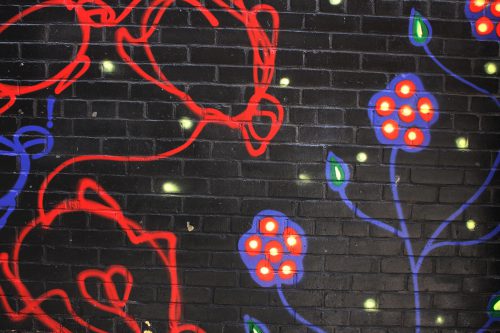
Floral designs reference Anishinaabe woodland style painting, quill work on birch bark boxes and beadwork on friendship bags; also a symbol of feminine energy, growth and nurturing. Bead work is a placework marker of where different First Nations are from.
Otter
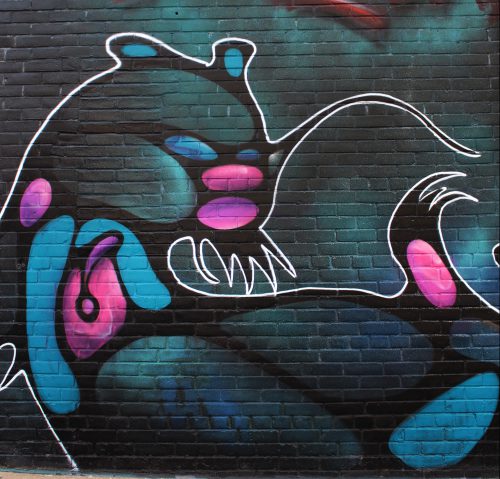
The otter is from the Ojibwe Creation Story of Turtle Island, symbolizing where everything began, the origins of the land that we are on and the sacrifices by the animals. In that first story, the otter is a symbol of “Survivance”, representing how Indigenous peoples are staying rooted in the face of colonialism, and how art is another form of surviving, and sharing first stories.
Fish
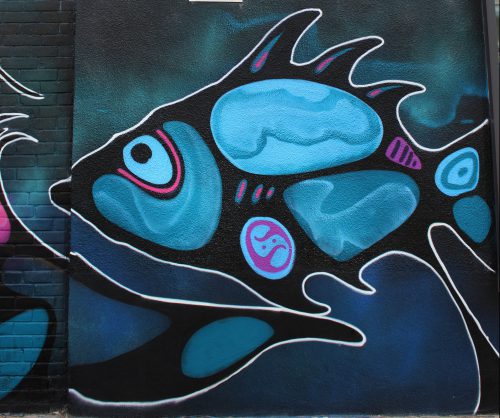
The fish is a main form of sustenance for Indigenous peoples; and also a reference to the fish fences, also called Weirs or Mnjikaning, in Chief Lady Bird’s community of Rama First Nations and many other communities.
Water
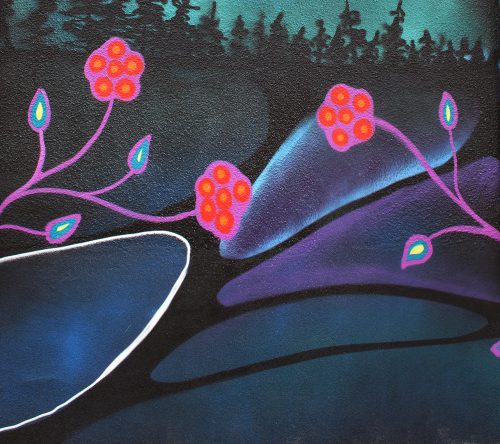
Water is life; symbol of the three rivers in Tkaranto and the many underground rivers which have been hidden by development; it’s also a symbol of honouring the clean water we have here in Tkaranto, which many Indigenous communities do not have and there are calls to change this as access to clean water is a basic human right.
Sky Domes
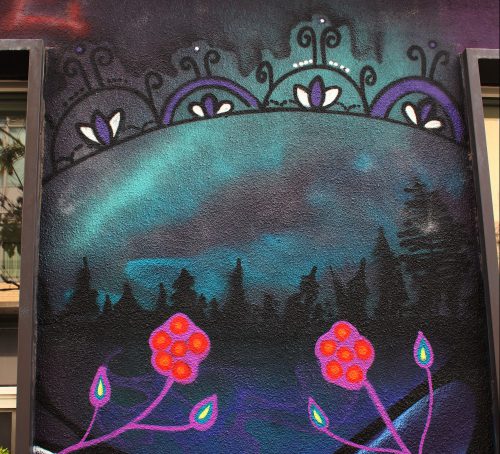
These ‘sky domes’ were included at the request of a local First Nations resident for whom they held special significance in her culture. Sky domes are Haudenosaunee designs, which honour the sky world from where life became.
Eagle
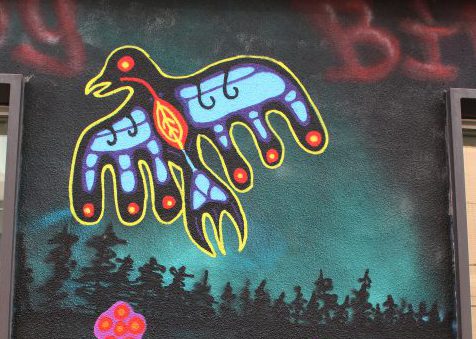
The eagle offers guidance; a symbol of connection to healing and communication with the spirit world. Mural artist Chief Lady Bird is from the Eagle Clan.
Bear
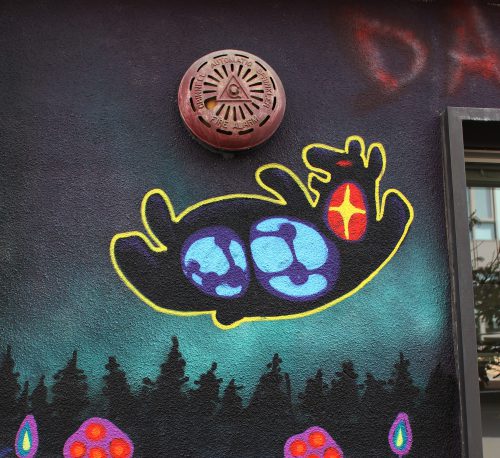
The bear is a reference to the Big Dipper (Ursa Major) constellation representing self-sacrifice and annual cycles of renewal.
Half Moon/Half Grandmother
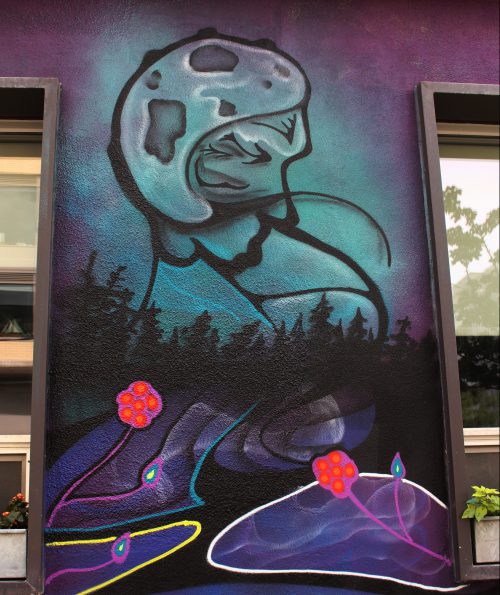
Reference to the ‘moon grandmother’ who has 13 cycles, teaching us how to live and what to do each month.
Lady Slipper
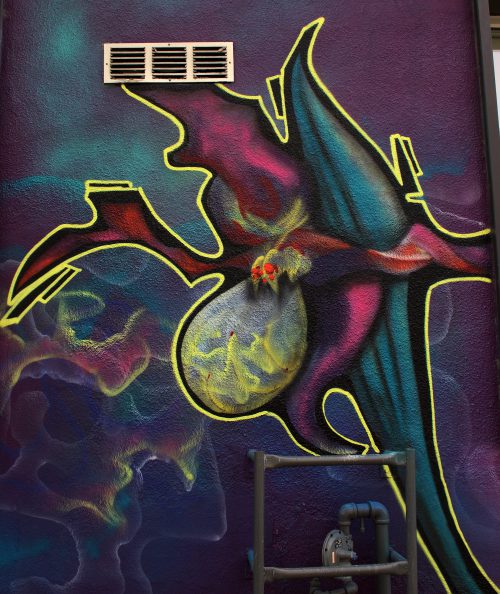
A symbol of persistence to care for people as it is a reference to the story of Lady slipper: a young girl who went to fetch medicine for her people. On her journey her feet became frozen and bleeding. She passed away but where her blood fell lady slipper flowers grew in the spring, becoming a source of medicine for her people.
Woman + Child
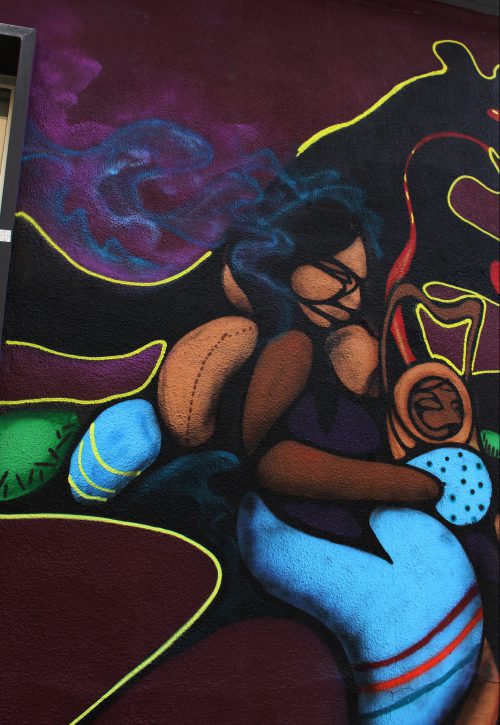
The baby in this depiction is strapped into a cradleboard which is a traditional protective baby-carrier that safeguards the infant and makes them able to be placed at eye level so they can see and experience the structure, ownership and learnings within the family; references a different viewpoint, as well as creation of bonds between peoples.
Spirit Connection
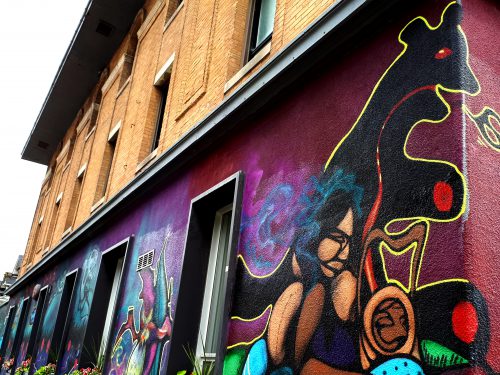
The west wall has an overarching spirit connection (yellow lines) starting from the cradle board that links back throughout the mural; symbolic of a prayer toward the next generation of youth.
The South-Facing Wall
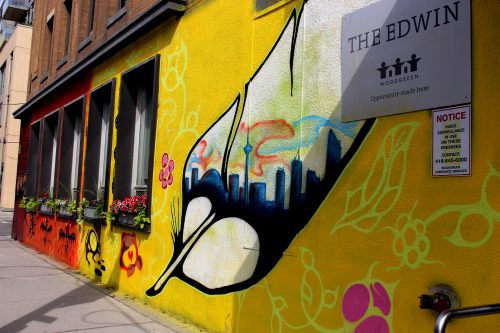
Birch Bark Baskets
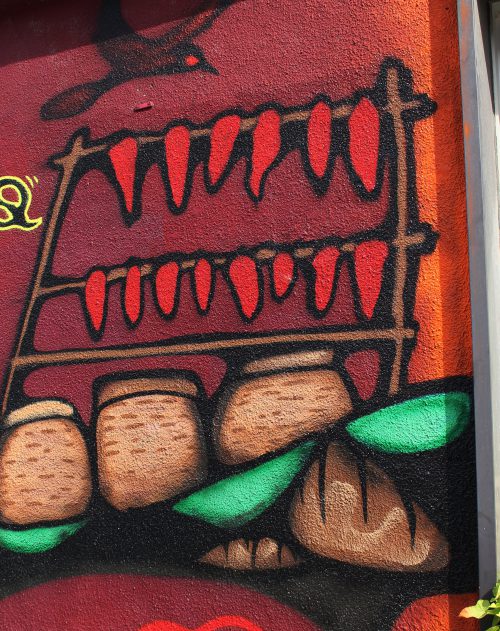
Birch bark baskets are used for many purposes such as drying fish, and safekeeping berries, and are used around river sides in communities; a symbol of abundance where there is unity.
Thunder Birds
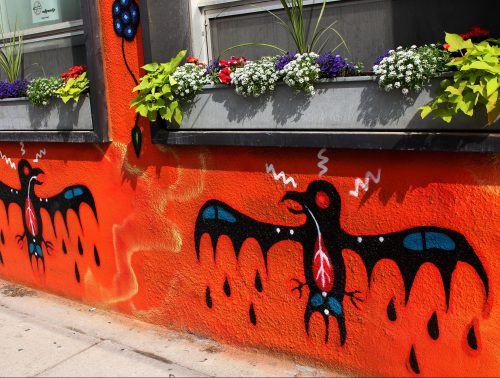
The thunder birds protect us and bring cleansing with the rain, keeping dark spirits down; they symbolize clashes with underwater forces.
Rabbit
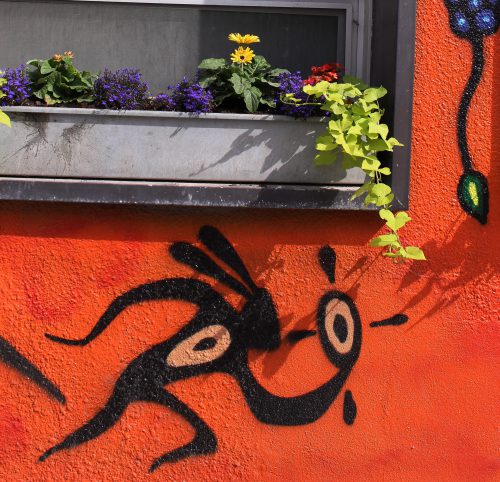
The Trickster ‘nanaboozhoo’ is a benevolent being, sometimes taking the form of a rabbit, the co-creator of everything; ‘boozho’ is also a greeting for ‘I see you’, acknowledging and giving credit to the creators.
Eagle Feather
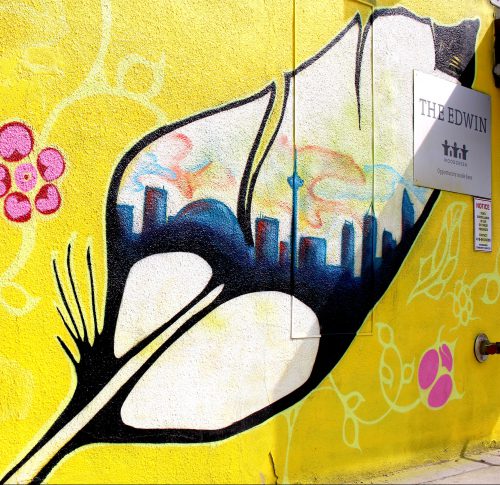
The eagle feather is the highest honour you can receive, based on contribution to the community, given from one Indigenous person to another. The Tkaranto skyline provides a contemporary connection whereby the feather becomes your medicine and symbolizes the enduring Indigenous presence here in Tkaranto.
The mural is part of the Riverside public art self-guided walking tour, check out the other stops on the tour!
READ THE FULL ARTISTS’ STATEMENT ABOUT THE MURAL:
Tkaranto has always been considered a meeting place. First, for Indigenous nations who have gathered here to travel, trade, hunt and fish. And now, in present day, for people to gather here from around the globe on the traditional territories of those who first occupied the land.
The land has always been known to guide us physically, spiritually, mentally and emotionally. Through this holistic lifestyle our ancestors are able to guide us through struggles and instill teachings and guidance to help us find the kindness in our path and hearts to heal ourselves and find balance. As a people, we are hurting. There are many young people suffering from depression as a repercussion of the continued effects of colonialism. In addition, there is both a water crisis and suicide epidemic impacting many First Nations communities within Canada. With all of this in mind, this mural aims to foster pride and hope and depicts hopeful metaphors alongside historic symbols surrounding our urban dwelling, such as the eagle feather – a sacred item for our people.
Public art that positively represents First Nations histories, contemporary living and imagined futures, is a way for us to smudge positive energy over our communities. This mural integrates traditional practices of this area, such as the use of fish racks, star knowledge and matriarchal family structures. By sharing this imagery with the people of Toronto, we are all able to keep the true history of Canada alive and acknowledge the enduring Indigenous presence on this land. Traditionally, this bounty was shared. This is what we are trying to do right now; exhibiting and sharing the bounty of Indigenous energy and culture – making space for Indigenous youth to have a voice and retrace their ancestors’ way of life.
Public art that shares Indigenous stories not only shares this history with our own peoples, but it also enables us to share with others as well. We hope to move toward a healthier and more holistic future that respects mother nature in a more sustainable manner so that we can provide for future generations like our ancestors did before us.
Thank you to Mural Supporters
This was a Cultural Hotspot SPARK project made possible in part by the Government of Canada, City of Toronto, StreetARToronto, the Government of Ontario, and Riverside BIA. Thank you also to Woodgreen Community Services and Sherwin Williams.

The ‘Riverside BIA 40 Years, 40 Stories’ Series is part of how we’re celebrating the 40th anniversary of this incredible neighbourhood of community-builders.
